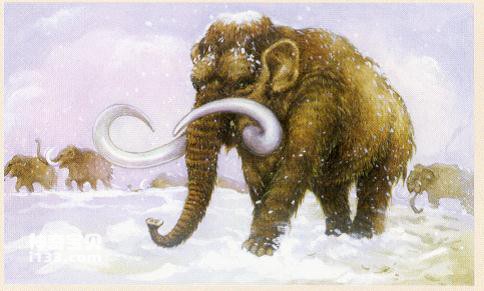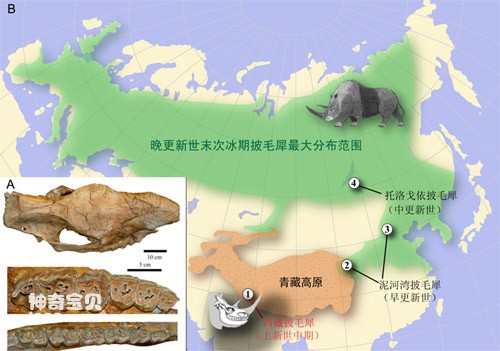The glacial fauna has long been recognized to be closely related to the global cooling events of the Pleistocene. The animals in it also showed adaptations to cold environments, such as being huge, covered in long hair, and having body structures that can scrape snow. Mammoths and woolly rhinos are the most representative.

These interesting extinct animals have always received widespread attention. Their above-mentioned characteristics were once assumed to have evolved with the expansion of the ice sheets in the Quaternary. That is, these animals were inferred to have originated in the high-latitude Arctic Circle. area, but there has been no credible evidence. Deng Tao and others proved based on new fossil materials from Tibet that some members of the Ice Age fauna had evolved and developed on the Qinghai-Tibet Plateau before the Quaternary. The high-altitude Tibetan Plateau with severe cold winters became a "training base" for glacial fauna, allowing them to form pre-adaptations to the glacial climate, and then successfully expanded to the dry and cold steppe zones in northern Eurasia. This new discovery overturns the hypothesis that ice age animals originated from the Arctic Circle, proving that the Tibetan Plateau was their original evolutionary center.

Migration and distribution of woolly rhino
As the ice age began to appear 2.8 million years ago, the Tibetan woolly rhinoceros left the plateau, passed through some intermediate stages, and finally came to the low-altitude and high-latitude areas of northern Eurasia. The mammoth-an important member of the woolly rhinoceros fauna that flourished in the late Pleistocene.
animal tags: mammoth yak argali
We created this article in conjunction with AI technology, then made sure it was fact-checked and edited by a Animals Top editor.